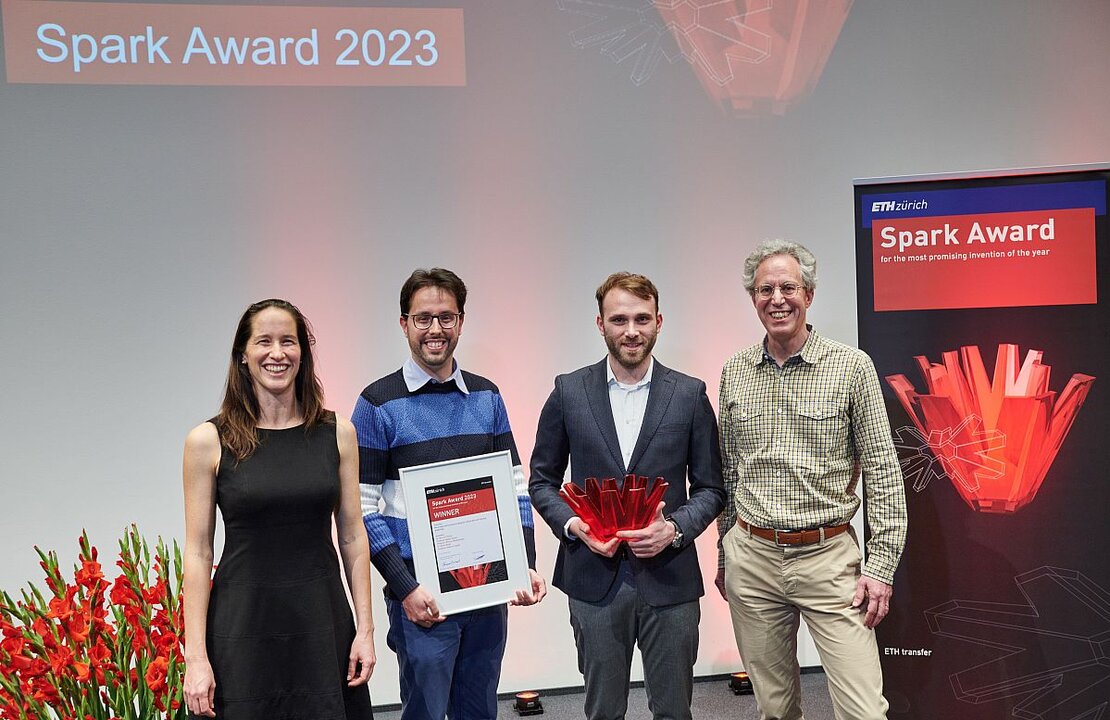Anticorrosion coating technology wins the Spark Award prize
31.03.2023The winner of the 2023 edition of the Spark Award is developing a recyclable anticorrosion coating for metals with self-healing properties. The solution will solve a major global problem that costs countries worldwide some 4,000 billion dollars.

Patents are integral to ETH Zurich, and each year, a jury of experts comes together to evaluate a list of patented solutions from the university and select a patented technology with the highest market potential. This activity takes place within the framework of the Spark Award program.
The competition follows a multi-stage selection process to identify the most outstanding idea that meets the criteria of originality, patent strength and commercial potential. This year, 20 patented technologies made it to the shortlist. The jury evaluated them to choose the five finalists presenting their solutions to the audience during the 12th award ceremony. The final stage involved voting on the winner of the best invention of the year. More than 200 guests comprising young researchers, professors, tech transfer and patent experts, but also representatives from industry and the start-up scene, witnessed the awarding of the winner.
The 2023 Spark Award winner is a team of researchers tackling metal corrosion, a major global challenge estimated to cost countries up to 4% of the global gross domestic product (GDP), amounting to some 4,000 billion dollars. Existing solutions on the market have still failed to prevent corrosion if the coating is defective and they are not recyclable.
The ETH research team comprising Markus Niederberger, Walter Caseri from the Laboratory for Multifunctional Materials, Marco F. D’Elia, Mirko Magni and Stefano Trasatti have engineered the solution. They developed a recyclable anticorrosion coating to efficiently protect metal surfaces from corrosion. The coating’s fluorescent characteristics help detect defects easily, while the self-healing properties stop corrosion. The coating is based on a material called Poly(phenylene methylene) (PPM). When mixed as paint and heated, it can be sprayed onto a surface and becomes solid. Holes and cracks are indicated when the protective layer fails to glow. The polymer can be removed entirely and recycled at the end of a product’s life with minimal material loss.
Following the successful early tests and requests from early adopters, the team is looking for a manufacturer to scale up. Plans to establish a spinoff are also underway.
Overall, all five solutions presented at the ceremony address huge industry problems. The four finalists are developing the following solutions: paper-based electrochemical diagnostics tool, integrated sensors for clothing and textile to measure fatigue, photothermal coating for defogging glasses, and Allogeneic Engineered Decoupled (AED) T cells to enhance cancer immunotherapy. The finalists each received a certificate in recognition for achieving the Top 5 spot.
(www.starupticker.ch)
Photo: Oliver Bartenschlager